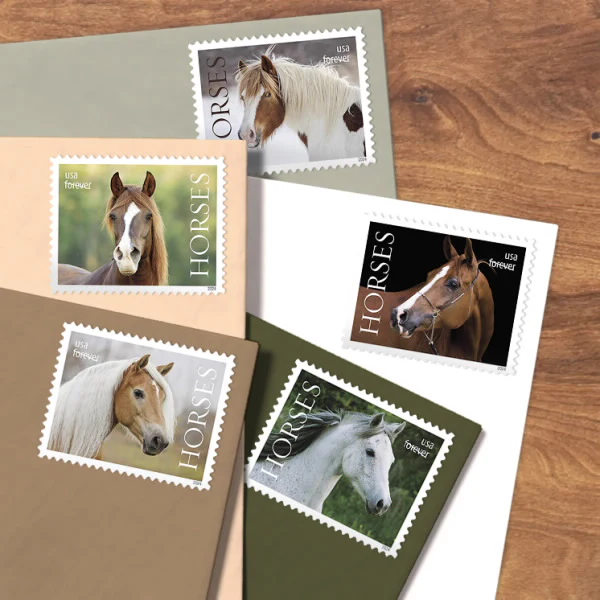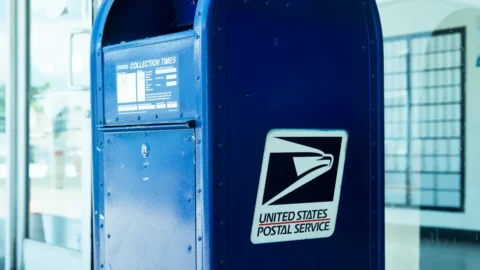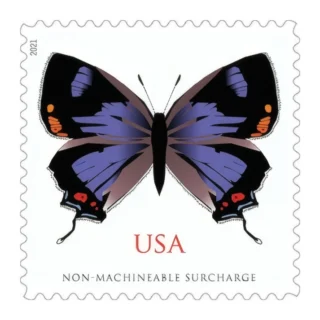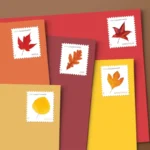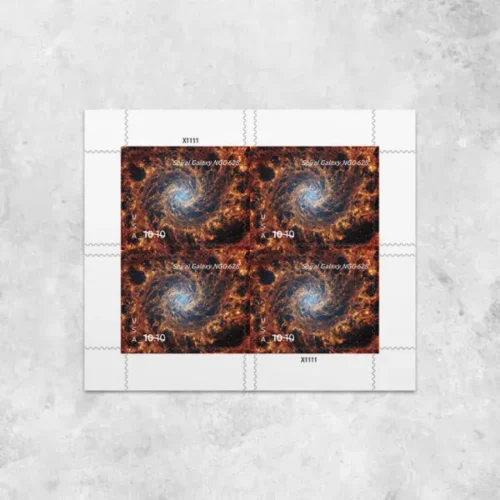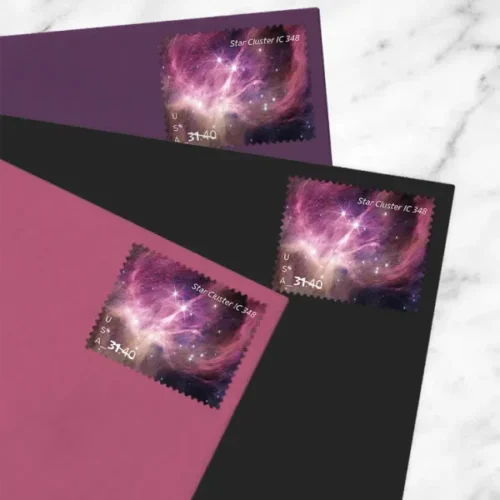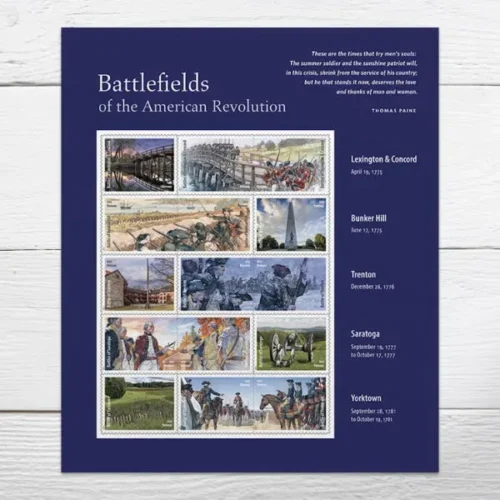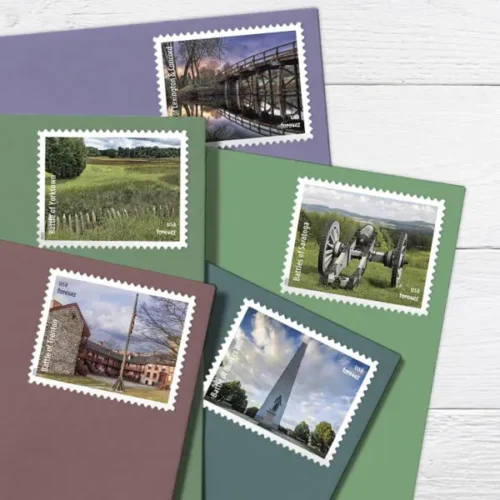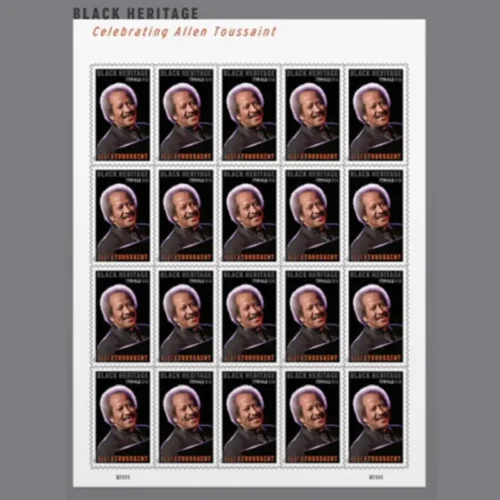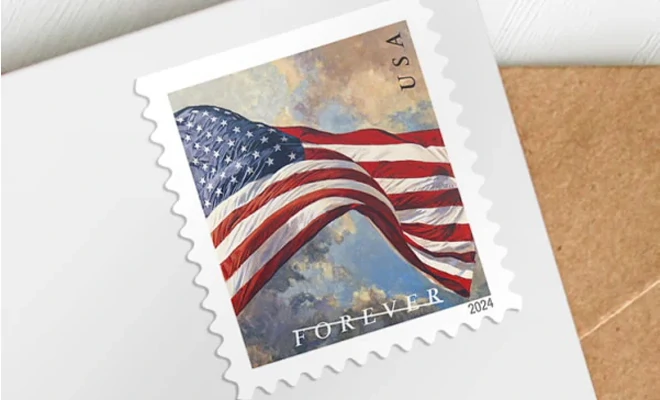If you’ve ever mailed an envelope, you’ve probably seen a Forever stamp. Today’s article discusses everything you need to know about Forever stamps. But before we get into that, let’s first give you an overview of the history of USPS stamps.
History of Stamps
Before stamps, letters were delivered to the post office and the postmaster wrote the postage in the upper right corner. At the time, postage was charged based on the number of sheets of the letter and the distance it was mailed. Postage could be paid by the writer or recipient upon receipt, or it could be partially prepaid and completed upon receipt.
The history of stamps in the United States dates back to February 1, 1842, when the first adhesive stamp was issued by the City Dispatch Post of Alexander M. Greig, a private mail carrier in New York City. The Post Office Department adopted the idea and began using adhesive stamps to prepay postage.
After the simplification of U.S. postage rates in 1845, New York Postmaster Robert Morris and others provided special stamps to indicate prepayment of postage. These are now known as Postmaster Provisional Stamps.
In 1847, the U.S. stamp was approved by Congress. The first stamps went on sale in New York City on July 1, 1847.
Workers use scissors to cut the first stamps printed on pre-gum perforated paper. Initially, there were two stamps, one featuring Benjamin Franklin, which sold for 5 cents, and one featuring George Washington, which sold for 10 cents.
Other forms of payment were not accepted until January 1, 1856, when the government made stamps mandatory. Later that year, in 1863, a five-cent stamp featuring Thomas Jefferson was issued, and a two-cent stamp featuring Andrew Jackson was issued.
In 1893, the United States issued its first commemorative stamps to commemorate the World’s Columbian Exposition in Chicago. The stamp featured a picture of Columbus’s voyage to the New World. Unfortunately, the standard-sized stamps were too small to feature paintings depicting events related to Columbus’s voyage. To this end, the size of the stamp was increased to 7/8 inches tall and 1-11/32 inches wide, almost twice the size of a standard stamp.
Commemorative stamps of different sizes and shapes have emerged over the years, with the first triangular stamp issued in 1997 and the first circular stamp in 2000.
On April 16, 1900, the first stamp album was issued, containing 12, 24, or 48 two-cent stamps. Later, on October 14, 1975, the first blank stamps – stamps without a printed face value – were issued.
Self-adhesive stamps were introduced nationwide in 1992 and quickly became popular with customers. By 2002, nearly all commemorative stamps were self-adhesive.
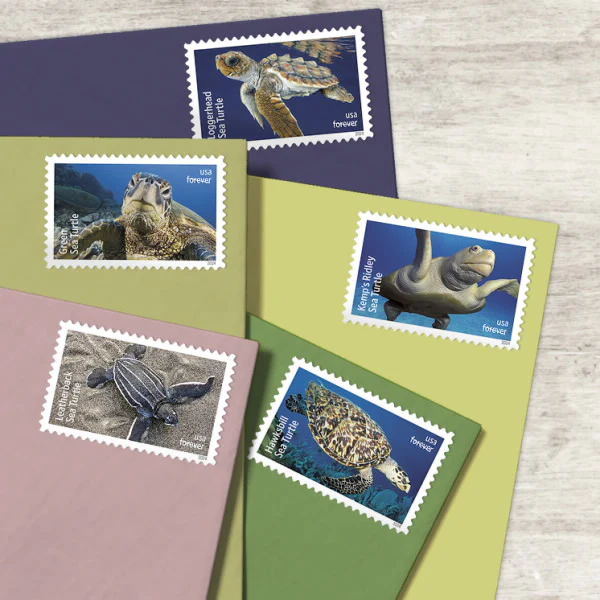
History of Forever Stamps
Forever stamps were first issued by the United States Postal Service (USPS) on April 12, 2007. They are undenominated, non-expiring stamps for customers mailing First Class Mail. They are sold at the price of a First Class stamp and are always valid for the first ounce of First Class postage. Initially, Forever stamps were issued to ease transitions during stamp price changes.
From 2007 to 2010, the Liberty Bell Forever stamp was the only design issued. However, as their popularity grew in 2010, two more designs were added – the Holiday Evergreen Forever stamp issued on October 21 and the Lady Liberty and American Flag Forever stamp issued on December 1.
Since 2011, all new commemorative stamps for one-ounce First Class Mail are Forever stamps. As of 2014, all one-ounce First Class Mail stamps are Forever stamps.
In 2013, USPS introduced the Global Forever stamp, which offers a single price for any one-ounce first-class international letter sent to any country in the world. By 2015, these types of stamps were issued for postcards and letters that require additional postage.
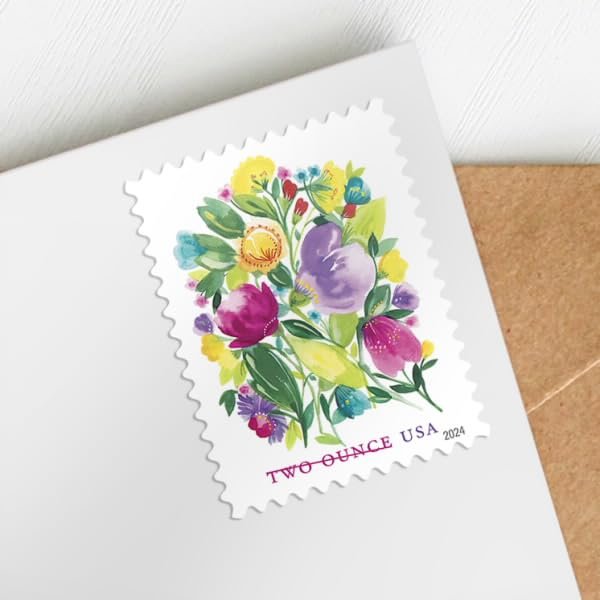
What is a Forever stamp?
As mentioned above, a Forever stamp is a special no-denomination stamp designed to save customers time and money, especially at a time when the price of first-class mail is volatile. When you buy a Forever stamp, it represents the price of one ounce of first-class mail postage.
Today, the USPS issues commemorative stamps featuring athletes, artists, natural wonders, and historical milestones, such as Forever stamps.
If you buy a Forever stamp today, it costs the same as a First-Class Mail stamp; however, if the latter goes up in price, you’ve saved some money.
Here’s what we’re saying – if you buy a Forever stamp for $0.60 each, and the First-Class mail rate goes up to $0.65 each, then for each letter you mail, you’ll save $0.05 over buying a First-Class stamp. In addition, the shift from a specific denomination of First-Class stamp to a Forever stamp is advantageous for people who enter mail-in sweepstakes and send in many entries over time.
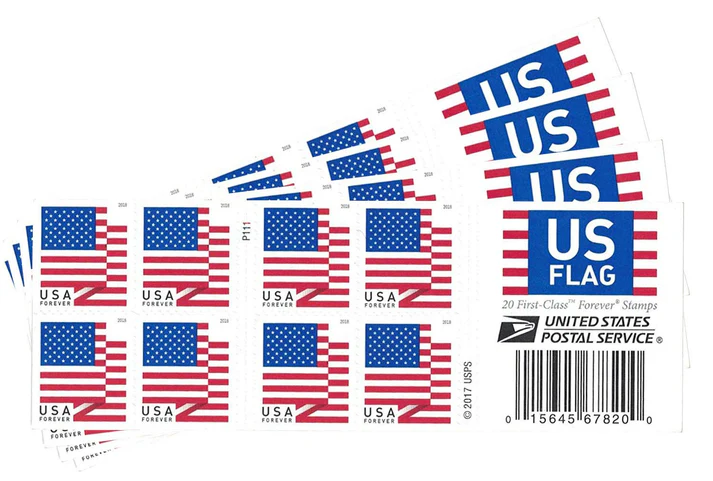
How much is a Forever stamp worth in 2025?
A Forever stamp is a “no-denomination” stamp. This means it does not have a monetary value or denomination printed on the stamp to tell you how much it is worth. Let’s break this down; if you look at any First Class stamp issued, you’ll see the word “Forever” written on it, but no dollar value.
This is because a Forever stamp is not fixed; it changes as the cost of a First Class stamp changes. So, let’s put it this way – your Forever stamp will be worth the current value of a First Class stamp.
As of January 2024, the price of a First Class Mail Forever stamp is $0.68 per ounce. For packages weighing up to 13 ounces, the price starts at $4.50. To find out the latest prices, check the current First Class postage rates on the official USPS website.
2023 Forever Stamp prices before the increase: The 2023 Forever Stamp actually increases twice: January 22, 2023: from 60 cents to 63 cents (a 5% increase), and July 9, 2023: from 63 cents to 66 cents (a 4.8% increase). One stamp covers the cost of mailing a 1-ounce letter. So, each additional ounce now costs 24 cents instead of the previous 20 cents.
In addition to increasing the price of Forever stamps, the USPS is also increasing other postage rates, which will take effect on January 21, 2024:
Forever stamps: from 66 cents to 68 cents.
Postage-paid letters: from (likely) 63 cents to 64 cents (the information is not clear, but follows historical trends).
Domestic postcards: No change from previous prices.
Outbound international letters: Prices may have increased, but the details depend on the destination and class of service.
If you buy a Forever stamp today for $0.68, you can mail a letter or raffle ticket with the stamp today, tomorrow, next month, next year, or even three years from now, no matter what the price of a first-class stamp is at the time.
Where to buy 2025 Forever stamps?
You can buy U.S. Forever stamps from any local USPS post office in your area. You can also buy stamps by contacting USPS by phone or online.
Other grocery stores, convenience stores, and gift shops also sell Forever stamps. You can also buy them from some retail e-commerce sites like Amazon and eBay.
For those living in other European countries, most postal services offer similar products; for example, Canada Post offers Forever stamps. You can contact your local post office for details on the types of stamps available in your location.
How do USPS stamp rates work?
The USPS does not set stamp prices anyway. They lost a lawsuit in 2019 over rate hikes.
Generally speaking, stamp rates are tied to inflation. When inflation rises, the USPS can petition the Postal Regulatory Commission to increase stamp rates, which is then forwarded to Congress.
That’s why the price of a stamp goes up a few cents every few years. As long as inflation is rising, stamps will become more expensive.
Does this mean you should buy hundreds of stamps and store them in case prices go up? Well, that’s not necessary. The USPS usually announces price increases before they go into effect.
How much is a Forever stamp worth?
There is no fixed dollar rate on Forever stamps. Instead, their value is based on the first-class postage rate for a one-ounce letter today. So, for example, if you bought a Forever stamp for $0.55 and want to use it to mail an envelope today, and the first-class postage rate is now $0.68, that means the value of your Forever stamp has also increased to $0.68.
How to Save on Forever Stamps?
If you’re good at bargain hunting, you can easily save some money on Forever stamps. You can start by searching for stamp sales on e-commerce sites like eBay. But be careful about the sites you search on to avoid buying fakes.
You can also save more by using credit card cash back offers – these can be found at online stores like eBay Bucks and Bates. In some cases, club stores like Costo also offer limited-time sales on Forever stamps.
Another way to get discounts is to win gift cards to stores that sell Forever stamps.
This way, you can save some money if you like to enter mail-in sweepstakes or mail envelopes frequently.
Why is the word “Forever” crossed out on Forever stamps?
If you have visited the official USPS website or any e-commerce website to buy Forever stamps, you must have noticed that the word “Forever” is crossed out.
Many people have spread the rumor that the crossed out word means that Forever stamps are not “forever”. Well, this is just a myth.
The USPS says that the word “Forever” is crossed out on the online images to prevent counterfeiting.
Also, when you buy the physical card, you will notice that the word “Forever” is not crossed out. The postal service only crosses out the word in the preview image to prevent bad guys from stealing copies of the card, printing fake stamps, and selling them to customers.
So, don’t worry; your Forever stamp will be valid forever.
How to check if a stamp is authentic?
A good way to tell if a stamp is authentic is to check it under UV light – the ink used in real stamps will glow under UV light, while fake stamps will not.
Also, fake stamps are mostly sold in bulk at a discount of 20% to 50%. One of the most counterfeited stamps is the First-Class Forever Flag Stamp, which is used on 1-ounce envelopes and costs $0.68.
The best way to avoid buying fake stamps is to buy them directly from the USPS or an approved retailer, not from an anonymous online seller offering a 20% discount.
While you can buy real stamps on Amazon, you have to be careful who you choose to buy from. So isn’t it surprising that international sellers sell Forever stamps to U.S. citizens for much less than they would pay for them?
What are the benefits of Forever stamps?
The most important benefit of Forever stamps is that they save customers money. You might think it’s just a few cents, but if you send many letters to the Sorrento mail sweepstakes, those amounts can add up over time.
When they were first introduced in April 2007, each stamp cost 41 cents. By January 2019, the price of a single stamp had risen to 55 cents. As of 2024, it will cost 68 cents to send one ounce of first-class mail.
This means that if you bought a Forever stamp in 2019 and wanted to use it now, you would have saved 13 cents – now, how much would that be if you bought hundreds of stamps? As inflation rises, postage prices continue to rise, so your savings level will increase over time.
Another benefit of using Forever stamps is convenience, if you are not looking to save money. The advent of these no-denomination stamps saves us the trouble of going to the post office to buy a two-cent stamp or trying to understand the current stamp price and whether there is a standard stamp of the same amount.


